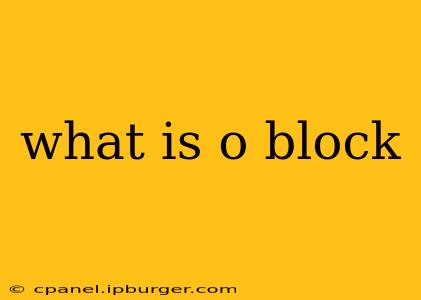OBlock, short for "Only the Block," is a notorious street gang originating from the O'Block neighborhood on the South Side of Chicago. Understanding OBlock requires looking beyond its sensationalized portrayal in media and exploring its history, structure, and impact on the community.
The Origins of OBlock
OBlock's roots are firmly planted in the complex socio-economic challenges faced by many Chicago neighborhoods. High poverty rates, lack of opportunity, and systemic issues contributed to the rise of gang activity in the area. The gang's formation is tied to the tragic loss of life and a desire for protection and control within the community. This created a power vacuum, which OBlock quickly filled.
OBlock's Structure and Activities
While exact details of OBlock's internal structure remain elusive due to its clandestine nature, it's widely understood to operate as a hierarchical organization. Key figures exert significant influence, controlling various criminal enterprises, including:
- Drug trafficking: The distribution of narcotics, particularly heroin and cocaine, remains a primary source of revenue.
- Armed robbery: Violent robberies targeting individuals and businesses are common.
- Murder and other violent crimes: The gang has been implicated in numerous acts of violence, resulting in countless deaths and injuries.
The gang's activities significantly impact the surrounding community, fostering a climate of fear and instability. The constant threat of violence discourages economic development and limits opportunities for residents.
OBlock's Influence and Media Portrayal
OBlock's notoriety has extended far beyond Chicago's city limits. The gang's association with prominent figures in the drill music scene, a subgenre of hip-hop, has contributed to its widespread recognition. This media portrayal, while sometimes sensationalized, offers a glimpse into the gang's culture and activities. However, it’s crucial to recognize that this depiction often glosses over the profound negative consequences of OBlock's actions.
The Impact on the Community
The impact of OBlock on the O'Block neighborhood and surrounding areas is devastating. The high rates of violence, drug use, and criminal activity directly affect residents' quality of life and limit their opportunities. The gang's activities also create a cycle of poverty and violence that is extremely challenging to break. Community initiatives aimed at providing support, resources, and opportunities are crucial in addressing the long-term effects of OBlock's influence.
Conclusion: Beyond the Headlines
OBlock represents a complex social issue rooted in systemic problems and lack of opportunity. Understanding its history, structure, and impact requires looking beyond the sensationalized media narratives. Addressing the underlying causes of gang violence is crucial, not only for the immediate community but for the betterment of Chicago as a whole. This necessitates a multi-pronged approach, including economic development initiatives, community programs, and effective law enforcement strategies. The narrative of OBlock should serve as a stark reminder of the urgent need for comprehensive solutions to address the societal factors that contribute to gang violence.
